|
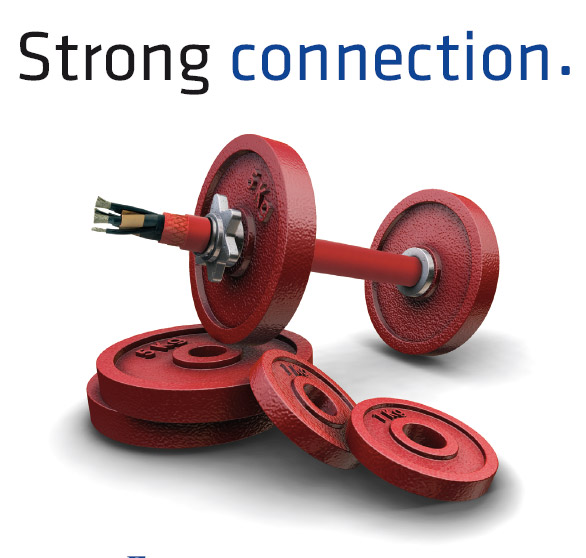 Tratos, thanks to its specialized laboratory compounds Tramet, today merged into TRATOS HV, has developed a new UV resistant compound. Tratos, thanks to its specialized laboratory compounds Tramet, today merged into TRATOS HV, has developed a new UV resistant compound.
The test carried out on a cable media has given excellent results.
The test was performed by the IMQ-'according to HD 605 S ".
|
|
Read more...
|
|
|
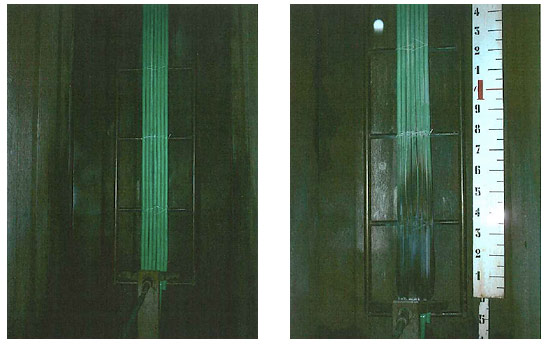
Rome-Naples high-speed train was inaugurated on schedule thanks to the fire resistant fibre optical cable from Tratos.
Years of significant investment in equipment, materials and human resources have led to the development of fire resistant optical cable which then passed the testing requirements of Italferr and IMQ.
The dynamism and multi-functional capabilities of the fibre optic department in collaboration with in-house special compound manufacturer, Tramet, produced a low smoke, zero halogen optical cable of exceptionally high performance.
|
|
Read more...
|
|
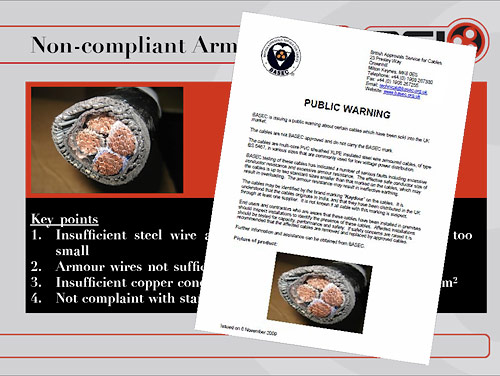 BASEC has issued a public warning notice about certain cables which have been sold into the UK market. BASEC has issued a public warning notice about certain cables which have been sold into the UK market.
The cables are not BASEC approved and do not carry the BASEC mark.
The cables are multi-core PVC sheathed XLPE insulated steel wire armoured cables, of type BS 5467, in various sizes that are commonly used for low voltage power distribution.
BASEC testing of these cables has indicated a number of serious faults including excessive conductor resistance and excessive armour resistance. The effective safe conductor size of the cables is up to two standard sizes smaller than that marked on the cables, which may result in overloading. The armour resistance may result in ineffective earthing.
|
|
Read more...
|
|
 The British Standards Institute (BSI) has withdrawn the standard for instrumentation cable BS 5308:1986 Instrumentation cables parts 1 and 2, however because of the extent of the worldwide recognition and demand for these types there is a new publication - PAS 5308-1:2009 Control and Instrumentation cables. Part 1: for polyethylene insulated cables and Part 2: for PVC insulated cables. The British Standards Institute (BSI) has withdrawn the standard for instrumentation cable BS 5308:1986 Instrumentation cables parts 1 and 2, however because of the extent of the worldwide recognition and demand for these types there is a new publication - PAS 5308-1:2009 Control and Instrumentation cables. Part 1: for polyethylene insulated cables and Part 2: for PVC insulated cables.
These “Publicly Available Specifications” available from BSI are endorsed by the BCA (British Cable Association) and the ECA (Electrical Contractors Association) and we will be manufacturing in accordance with the new documents.
|
|
Read more...
|
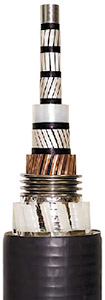 high voltage cables up to 220 kV high voltage cables up to 220 kV
While investigating new cables for power transport, we have realized a superconductor prototype and the accessories necessary for its installation.
Superconductivity is the elimination of the electrical resistance in the flow of current. A highly innovative technology applied also to electrical infrastructure for power generators and transportation of electricity. The various applications of superconductors include also power cables for energy distribuition.
|
|
Read more...
|
|
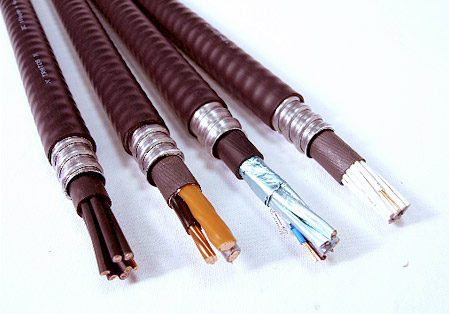 TRATOS ARMAFLEX can be used in both dry and wet locations; in ventilated, non- ventilated and ladder type cable ducting, and is also suitable for direct burial. TRATOS ARMAFLEX can be used in both dry and wet locations; in ventilated, non- ventilated and ladder type cable ducting, and is also suitable for direct burial.
Quantities start from as little as 100 mtr and up to 1500 mtr in a continuous length. The interlocking armour is available in both Aluminium and Galvanised Steel upon request with a range of elements for use in automation, control, lighting, data, coaxial, fire resistant and power. The sheathing materials available include Low Smoke Zero Halogen, MDPE and PVC; the interlocking armour is available in a range of sizes with an internal diameter of 8.5mm up to 33.50mm with other sizes available upon request.
|
|
Read more...
|
|
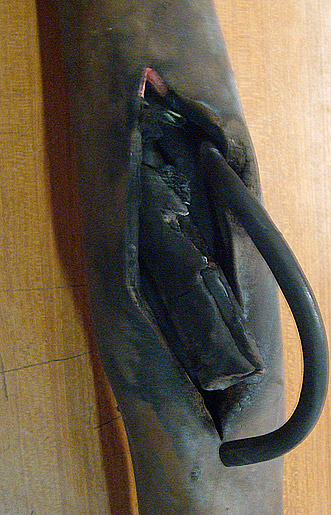 Tratos Cavi has, for many years, been taking on the challenge of developing the right cables for extremely high speed container handling cranes. Below is a summary of Tratos’ on-site experiences in this field: Tratos Cavi has, for many years, been taking on the challenge of developing the right cables for extremely high speed container handling cranes. Below is a summary of Tratos’ on-site experiences in this field:
Critical Stress situations in high speed cranes: an analysis
The latest generation of container cranes (ARTG and RMG) are designed with ever increasing travel speeds, up to 300 m/min.
This poses an ongoing challenge to manufacturers both of cables and cable reels.
TRATOS approached this problem by looking back on their extensive experience in container ports worldwide. They noted that almost inevitably cables had to withstand a range of tensile loads during operation due to control systems being unable to suitably compensate for the forces involved during acceleration and braking. It is important to note that this exposure to a range of tensile loads is due in part to modern reel manufacture being designed to not expose the cable to a tensile load beyond certain limits defined by the manufacturer.
|
|
Read more...
|
|
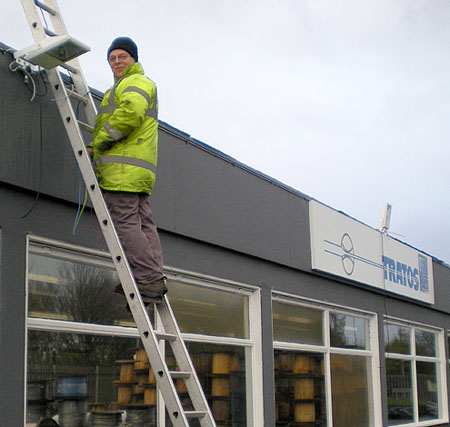 “We shall not fail or falter; we shall not weaken or tire. Give us the tools and we will finish the job!” “We shall not fail or falter; we shall not weaken or tire. Give us the tools and we will finish the job!”
Winston Churchill
|
|
Read more...
|
|
|
|
|
|